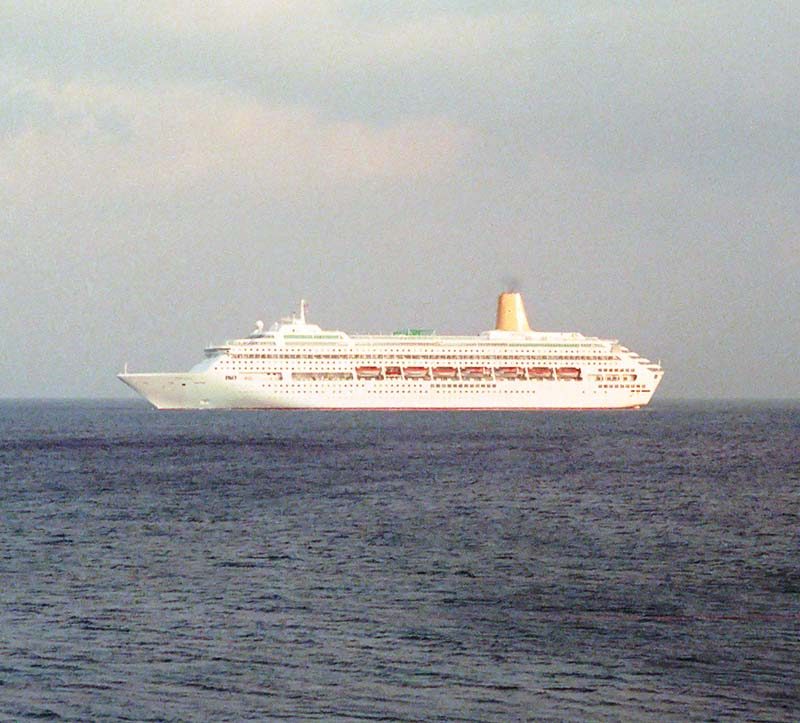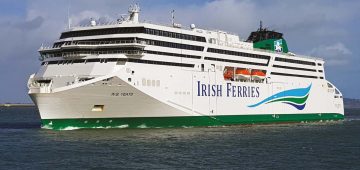Reflections on Oriana
In 1993 I was asked by Sir Jeffrey, now the Lord Sterling of Plaistow, P&O’s Chairman, whether I would take command of the new Oriana building at that time in Papenburg, Lower Saxony. My initial reaction was, that being only a couple or so years from retirement, the post should go to a rather younger man. However, having been “persuaded”, I looked upon the appointment as a great honour, and would endeavour to fulfil the role as her first Master to the best of my ability.
Here was a ship that was to be successor to the iconic Canberra, of which I had been in command for a number of years, and was tasked with the responsibility of ensuring that, as much as possible, the ambience of that marvellous old warhorse be melded into her state of the art successor.
The first task was to select a group of senior on board personnel, who would act as the task force in Germany on the run up to her entry into service. Vitally we got, in my view, a team of superb quality, who together with the Management of Jos. Meyer ensured that when the ship entered the North Sea on trials in the spring of 1995, she was as ready as could be for the pioneering role as the “face of the modern cruise liner.” A worthy successor to that elderly lady of the seas Canberra.
The months up until her slow progress down the River Ems were truly busy and involved many long hours and days during the Northern winter, to ensure that all was as ready as could be for her working life.
Visits were made to Navigational instrument makers, engine manufacturers, galley equipment makers, carpet manufacturers and showrooms, and it was pleasing to note that many of the ancillary workers on board at the yard were indeed British carpet layers, carpenters etc.
Much thought had gone into the design of the vessel, and it was more than a happy coincidence that the “double funnel”, and the slanted supports for the lifeboats and passenger tenders on the Promenade deck had been a feature of her predecessor.
Bridge design was uppermost in my mind, and together with the Navigation Officers, we came up with a layout that set the pattern for many vessels in the next few years, uncluttered and serviceable.
Joystick control of main engines, bow and stern thrusters, and twin rudders had to be learnt, and the Senior Southampton pilot and I had many sessions on the simulator to “get a grip” on the “Lips stick”, not entirely satisfactorily at first as we frequently berthed Oriana in the nearby car park at No. 106 berth Southampton docks until the simulator was “tweaked.”

Happily, by the time Oriana entered service, the car park was spared our arrivals there!

Trials in the North Sea conducted in the late winter gales could not be called an entire success, and at speed in excess of 25 knots, problems arose with cavitation from the state of the art scimitar shaped variable pitch propellors, necessitating a visit to the Blohm & Voss dry dock in Hamburg in mid trials to partially rectify the Lips propellor problem. Many overnight sessions at speed under trying conditions were necessary, and when we arrived in Southampton for the Naming Ceremony by HM the Queen on 6th April 1995, we were heartily pleased to leave the North Sea.
We certainly had a ship of which to be proud, and it was now the job of the splendid ship’s company to justify the faith which had been placed upon us.
We got off to a grand start with our first port of call, Funchal in Madeira at noon on 12th April, a favourite port of us all, and they gave us the warmest of welcomes.
Our initial cruise to the Canary Islands and Portugal was a resounding success and Ambassadorial visits were interspersed with those of Travel Agents and Port Authorities wherever we went.
This set the pattern for the next few cruises and it was a heady, albeit tiring few months until I proceeded on leave in early June, not to return again, after a well deserved leave until mid August.
Naturally there were a few problems, many small in nature, and eventually the cavitation problem was resolved, not without heartache, but the main happiness was that Oriana was truly accepted by the passengers who fell for her in their droves. It was a real pleasure to me that the Ship’s Company were so proud of our ship and this feeling was transmitted to our guests.
Over the next 14 months until I retired I gained huge satisfaction and pleasure from the fact that I had been there “at the start”, and had watched the ship being constructed in individual 500 tonne prefabricated units to emerge chrysalis like into its final beautiful shape, a far cry perhaps from the behemoths of the 21st century passenger liners to come.
Proudly we circled the Oceans of the Earth, culminating in a tremendous welcome on the Round the World voyage in Sydney on February 18th 1996, where we were treated to a fireworks display of extraordinary magnificence.
Hong Kong followed, and wherever we went we were greeted in majestic fashion, a true and fitting result of years of dedicated performance from the P&O Board for their vision, and the Ship’s Company for their living up to the responsibility that had been placed upon their shoulders.
They had not let us down.





Comments
Sorry, comments are closed for this item